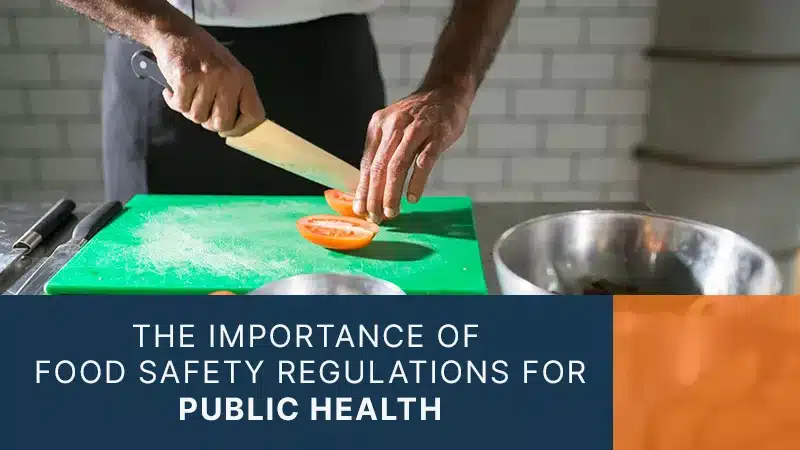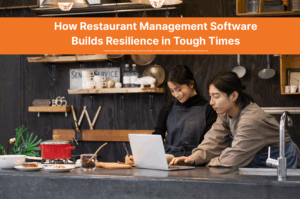Every year, millions of people fall ill due to foodborne diseases, highlighting the critical need for effective food safety regulations.
These laws are designed to protect public health by ensuring that the food we consume is safe and properly handled from farm to table. Understanding the framework of these regulations is essential in recognizing their impact on our daily lives.
Food safety risks are considerable, so regulations are established through a collaborative effort involving federal, state, and local agencies, each playing a vital role in developing and enforcing these laws. They address various aspects of food handling, including hygiene practices and proper cooking temperatures, to reduce the risk of contamination. Exploring how these regulations evolve and the reasons behind them shed light on their importance.
This article aims to delve into the significance of food regulation and its role in safeguarding public health. We will examine the various types of regulations, how they are implemented, the tools available for compliance, and the innovative technology that simplifies the process for food handlers and businesses.
The Purpose of Food Safety Laws & Regulations
Food safety regulations are vital for protecting public health by preventing foodborne illnesses.
Each year, roughly 48 million Americans suffer from foodborne illnesses, with 3,000 fatalities. The U.S. Department of Agriculture (USDA) and the Food and Drug Administration (FDA) are the central agencies charged with enforcing these regulations across various segments of the food supply chain.
The Food Safety Modernization Act (FSMA) is a significant legislative reform focusing on preventing contamination rather than responding to outbreaks.
The General Food Law Regulation in Europe provides a structured framework for food safety, setting forth principles and procedures that safeguard consumer interests.
These regulations ensure the safe production, handling, and distribution of food. By following these laws, food businesses also help secure public confidence in the safety of products ranging from raw meat and egg products to prepared meals in food service establishments.
How Food Safety Regulations Are Created
Food safety regulations are crafted through a rigorous scientific research and data analysis process.
Regulatory bodies like the USDA and FDA play pivotal roles in translating this research into practical regulations. These bodies use documented needs and scientific studies to establish rules that effectively protect public health.
The history of these regulations highlights early challenges, demonstrated by the Pure Food and Drug Act of 1906 and the Meat Inspection Act, which were responses to unsafe food practices. Over time, these frameworks have evolved and are now systematically outlined in the Code of Federal Regulations, addressing a broad range of food safety issues from raw meat handling to food preparation.
Professional organizations contribute significantly by offering expertise and training to industry professionals. They assist in developing these regulations, ensuring they remain robust and effective. Here are key aspects considered in crafting food safety regulations:
- Scientific Research
- Public Health Data
- Industry Expertise
- Consumer Safety
This comprehensive approach ensures regulations are continually updated to address emerging food safety hazards and consumer food safety concerns.
Federal Food Safety Regulations
Federal food safety regulations are critical in protecting consumers from foodborne illnesses.
These regulations are enforceable at national, state, and local levels. The U.S. Food and Drug Administration (FDA) manages regulations for all foods produced in the United States, while the Food Safety and Inspection Service (FSIS) focuses on overseeing meat, poultry, and egg products.
Key legislation such as the 1906 Pure Food and Drugs Act and the 1938 Federal Food, Drug, and Cosmetic Act have established the foundation for modern food safety practices. The FDA also provides a Food Code, which offers scientific standards and guidelines that states and localities can adopt for regulating restaurants and institutional food settings.
State authorities are responsible for inspecting meat and poultry sold within their borders, but these inspections must meet or exceed federal standards as required by the Wholesome Meat Act and Wholesome Poultry Products Act. These regulations ensure that food safety guidelines are consistent, thereby maintaining public health and minimizing foodborne illnesses.
Understanding and implementing these regulations are key to addressing food safety issues throughout the food industry and supply chain.
State and Municipal Food Safety Regulations
State and municipal food safety regulations in the U.S. involve over 3,000 agencies responsible for overseeing retail food establishments.
These agencies fall under either health departments or departments of agriculture, which often handle different types of food establishments, leading to varying levels of oversight complexity.
For instance, while health departments typically manage restaurant regulations, agriculture departments usually oversee supermarkets, potentially causing regulatory overlaps and enforcement complexities.
Each state is tasked with inspecting meat and poultry products sold within its borders, while the federal Food Safety and Inspection Service (FSIS) monitors the production processes to ensure compliance with food safety standards. This division of responsibilities can result in differing regulatory approaches and cultural perspectives on food safety issues, influenced by the statutes and standards each level of government follows.
State and local regulatory systems often differ, impacting how food safety regulations are developed and enforced. These differences can affect everything from handling raw meat and eggs to using food thermometers in food preparation.
Cooperation between state and local agencies is essential to manage these challenges effectively and ensure the protection of public health in the food supply chain.
Some Common Types of Food Safety Regulations
Food safety regulations play a crucial role in maintaining public health by ensuring safe food preparation and handling practices.
While these regulations can vary by jurisdiction, certain standards are commonly upheld throughout the United States. For precise advice on your area, consult with a qualified expert such as an attorney or public health official.
Below are examples of food safety regulations widely implemented in various regions.
Proper Cooking Temperatures
Achieving proper cooking temperatures for raw foods is essential to prevent foodborne illnesses.
The safety of meat, whether it’s whole or ground meat, is paramount.
Pork, and any dishes containing pork, should reach an internal temperature of at least 150°F (65.6°C).
Rare beef must be cooked to a minimum of 130°F (54.4°C).
Foods, in general, should reach at least 140°F (60°C), while shell eggs and related dishes need to be cooked to at least 145°F (62.8°C) to prevent e coli outbreaks.
Reheating potentially hazardous hot foods should be done at a temperature of 165°F (73.9°C) to ensure safety.
Having a handful of quality commercial food thermometers to ensure proper temperatures are reached for hot foods and cold foods and preventing potential risks associated with improperly stored meat products and egg products is a must!
Personal Hygiene
Personal hygiene is pivotal in food safety to prevent the spread of diseases through food poisoning.
Proper handwashing with soap and warm water can prevent many diarrheal illnesses and respiratory infections. It is vital to regularly clean hands, utensils, and surfaces. Separating raw meat, poultry, seafood, and eggs from ready-to-eat foods is also crucial to avoid cross-contamination.
Pest Prevention
To keep pests away, store food in sealed containers and regularly seal cracks or holes in food establishments.
Employ professional pest control services if rodent presence is suspected. A well-designed storage area can prevent pest contamination and the possible communicable disease that can spread as a result Empty and clean dustbins every night to maintain hygiene.
Cross-Contamination Prevention
Preventing cross-contamination involves keeping raw meat, poultry, and fish separate from other foods.
After cutting these items, wash cutting boards, knives, and countertops with hot, soapy water. Always marinate meat and poultry in covered dishes in the refrigerator. Proper handwashing after handling raw meats is essential to prevent the spread of bacteria.
When preparing special dishes for people with conditions like Sylliac’s Disease, segregation of food, workspaces, and tools is essential to prevent allergic reactions
Proper Food Storage
Proper storage of food, especially highly perishable food, is crucial to avoid foodborne illness.
Cleaning and separating foods are fundamental to preventing germ spread. U.S. food codes and USDA and FDA provisions provide standards for food preparation and storage. Adequate storage temperatures inhibit harmful bacterial growth, thus protecting public health.
Proper Disposal of Food Waste
Correct disposal of food waste is vital to avoid attracting pests and rodents.
Garbage should be disposed of daily and at the end of night, and dustbins should be washed regularly. Floor drains can help manage liquid waste safely. Efficient management of food waste prevents public health risks and reduces costs and inefficiencies. Storing food in sealed containers helps minimize contamination.
Food Safety Regulation Compliance Tools
Compliance with food safety regulations in the U.S. requires versatile tools due to varying enforcement at national, state, and local levels.
State and local agencies can adapt to federal standards, so compliance tools must accommodate these regional differences. The USDA and FDA’s cooperative inspection programs provide guidance, helping establish uniform practices within the food supply chain.
The FDA publishes guidelines essential for food manufacturers, aiding in the development of compliance tools to address food safety concerns like foodborne illness and contamination.
Organizations such as the Food Marketing Institute and the National Restaurant Association support compliance by offering model policies and training programs. These resources help food retailers and service establishments align with regulatory standards effectively.
Key Compliance Tools:
- FDA Guidelines and Publications
- Cooperative Inspection Programs by the USDA and FDA
- Model Policies From Industry Organizations
- Training Programs for Food Service Establishments
The food supply chain can greatly benefit from technological solutions, ensuring safety from raw meat processing to consumer food handling.
Monitoring aspects of food safety, like storage of food and food preparation practices, helps prevent foodborne diseases and food poisoning. Embracing technology enhances compliance and contributes to the overall efficiency and reliability of food safety programs.
Understanding and implementing these tools ensure food safety, reduce foodborne diseases, and promote public health across the industry.
Use Technology to Simplify Compliance
In the ever-evolving food industry, complying with food safety regulations is crucial to prevent foodborne illnesses and ensure public health.
The use of technology, such as SynergySuite’s award-winning software and our partners, can simplify and streamline these processes. This software helps generate comprehensive checklists, and monitor inventory, effectively reducing food safety hazards.
By automating routine tasks, businesses can focus more on safe food preparation and less on manual compliance checks. Using technology aids like SynergySuite’s software can make the job of food safety easier and more intuitive.
Contact us today for a free, personalized demo so we can show you how!






